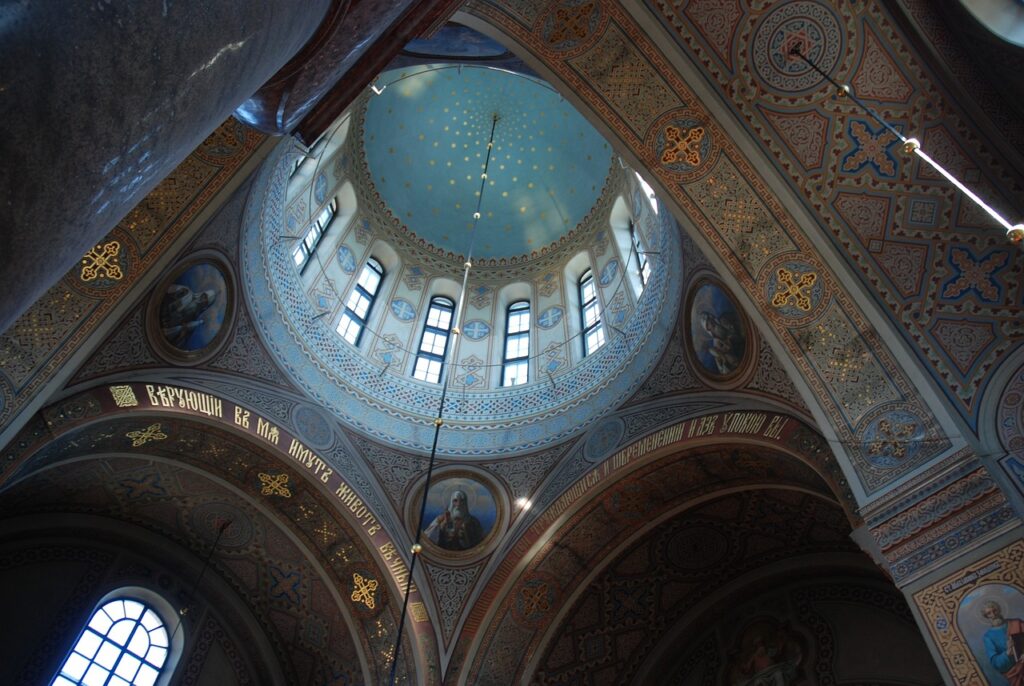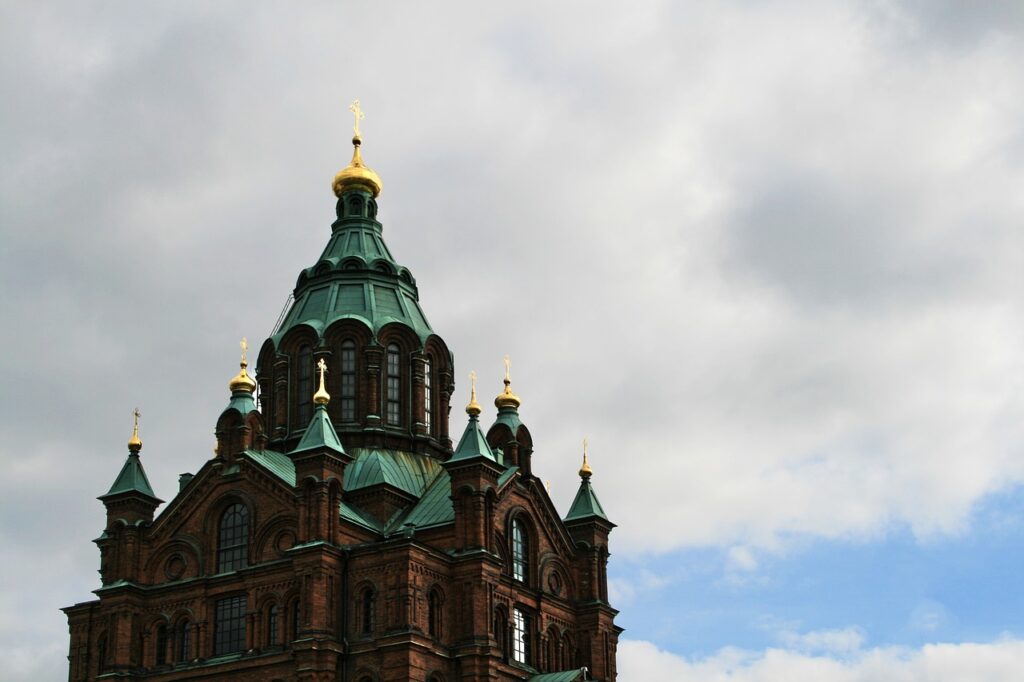Have you visited the Uspenski Cathedral?

The Uspenski Cathedral, located in Helsinki’s Katajanokka district, stands as a remarkable testament to history, dating back to its completion in 1868. As the largest Orthodox church in Western Europe, its striking appearance includes golden cupolas and a redbrick facade, serving as a prominent symbol of the Russian influence on Finnish heritage. Situated amidst the city’s architectural landscape, visiting this cathedral offers a glimpse into Finland’s rich historical tapestry. In 2006 it was granted the status of a national public monument and in 1991 it was declared a UNESCO World Heritage Site.
Location: Kanavakatu 1, 00160 Helsinki, Finland
Inside the Cathedral

Helsinki’s Uspenski Orthodox Cathedral is a striking example of Russian-Byzantine architecture, towering above the cityscape with its red brick exterior adorned with 13 towers and gilded domes. Its exterior features intricate mosaics and frescoes depicting biblical scenes and Russian folklore. Inside, the cathedral boasts elaborate mosaics, a gilded iconostasis, and marble columns, along with large chandeliers hanging from the ceiling. A notable feature is the grand iconostasis separating the high altar, adorned with wood carvings and mosaics. Among its treasures are a rare icon of Saint Nicholas, a wooden statue of the Virgin Mary, and relics of St. Sergius of Radonezh. The cathedral also houses ancient books, manuscripts, an 18th-century bell, and a relic of the True Cross, reflecting the rich history of the Orthodox Church in the region. Additionally, visitors can explore objects showcasing Helsinki’s history, including a model of the city from the 19th century.

Interesting news about it!

The Uspenski Orthodox Cathedral houses several valuable icons, including a rare 19th-century variant of the icon of St. Nicholas the Miracle Worker. This icon was stolen in broad daylight in 2007, during a busy period of tourist visits. Measuring 45 by 35 centimetres and encased in a protective frame, it was displayed in the pulpit of the cathedral. Despite extensive search efforts, the icon’s whereabouts remain unknown.
In a separate incident in 2010, the icon of the Virgin Mary from Kozelotshana was stolen from the cathedral but later recovered in 2011. The thieves broke into the church through a window on two occasions, with DNA testing confirming their involvement. Although initially denying involvement, one of the thieves eventually confessed and revealed the icon’s location after spending eight months buried underground. Fortunately, the icon remained nearly intact despite its ordeal.
Why was the Uspenski cathedral built?
With the establishment of the Holy Trinity Church in Helsinki in 1827, the foundation of Helsinki’s Orthodox Church was laid. However, as the Orthodox parish grew, there arose a need for a larger place of worship. Recognizing this necessity, the construction of the Uspenski Cathedral began, primarily funded by the contributions of parishioners and private donors. This initiative marked a significant expansion of Helsinki’s Orthodox presence, reflecting the evolving religious and cultural landscape of the city.

Uspenski Cathedral renovations

The Uspenski Cathedral has undergone multiple renovations over its 150-year history. The first major renovation occurred in the late 19th century when Finland’s first Orthodox Archbishop, Antoniy, reconsecrated the cathedral in 1893. Another significant renovation took place for its 100th anniversary.
Recent renovations have included gilding the cupolas and tuning the bells from 2004 to 2007, as well as restoring the celestial ceiling of the central cupola from 2015 to 2016. Currently, preparations are underway for the restoration of the cathedral’s iconostasis.
How to reach the cathedral
To reach the Uspenski Orthodox Cathedral in Helsinki, start by taking public transport to the city centre. The quickest option is to use the Helsinki Metro, which stops at Central Railway Station(Rautatientori Station ).From the central railway station you just have to walk for five minutes to the cathedral. Head east on Mannerheimintie and turn right on Mikonkatu. Then, turn left on Katajanokanlaituri, and you’ll find the cathedral on the right side of Senate Square. Look for its distinctive features or reference photos.








